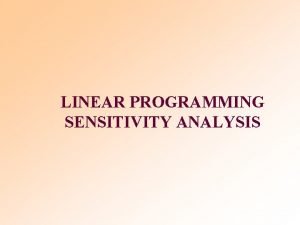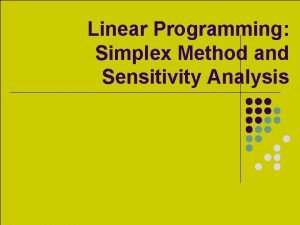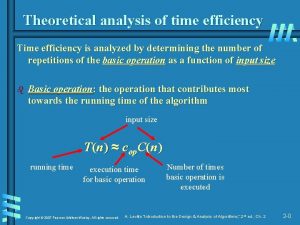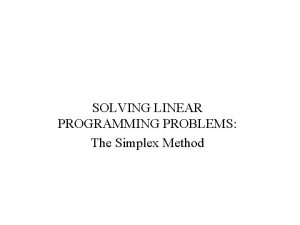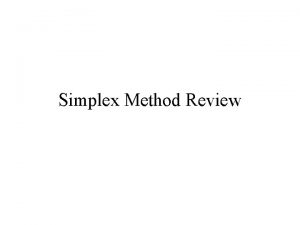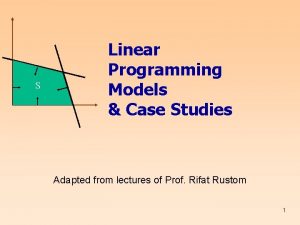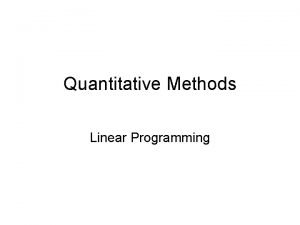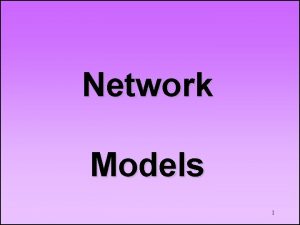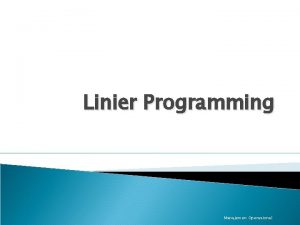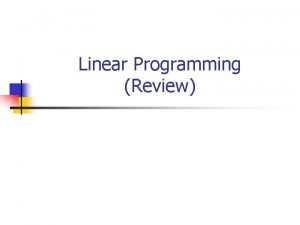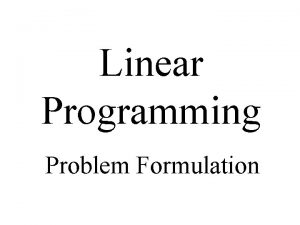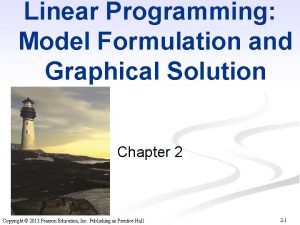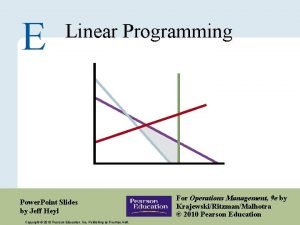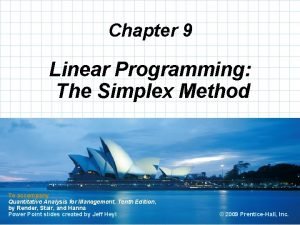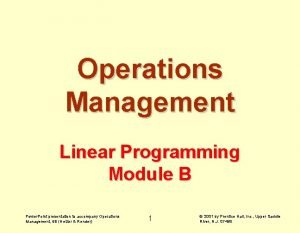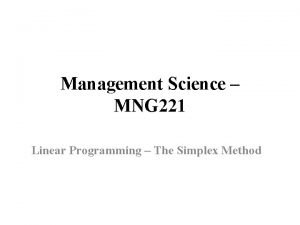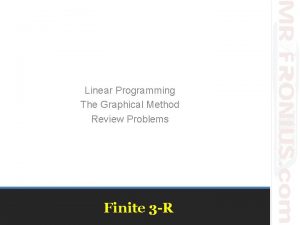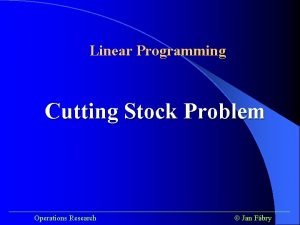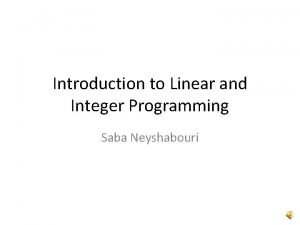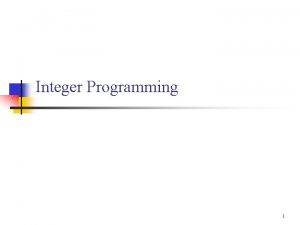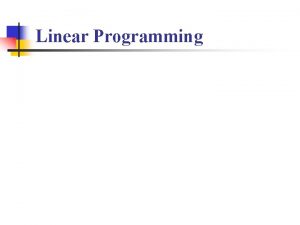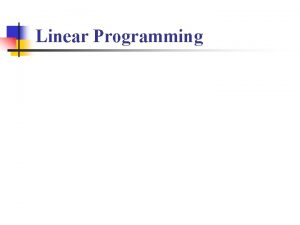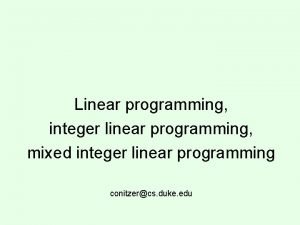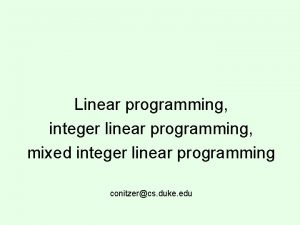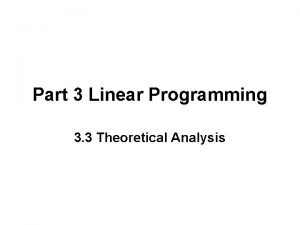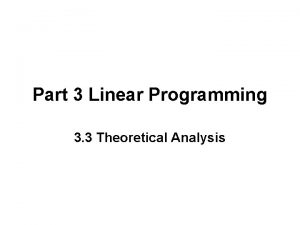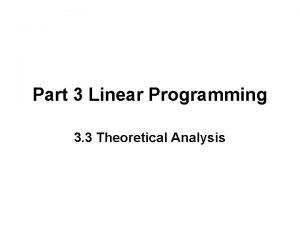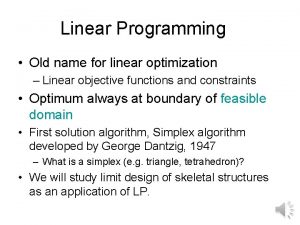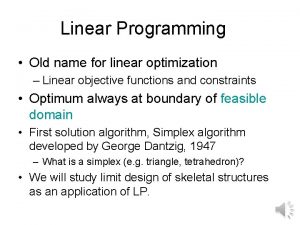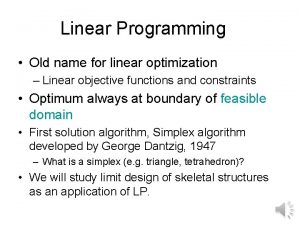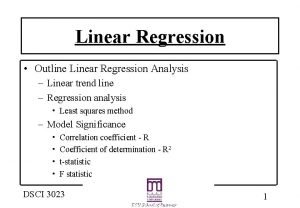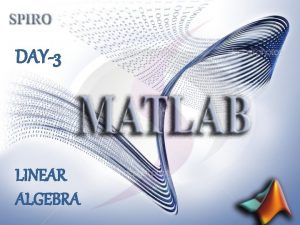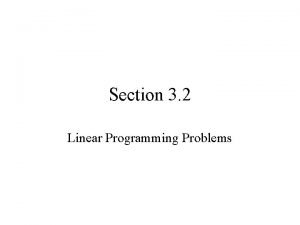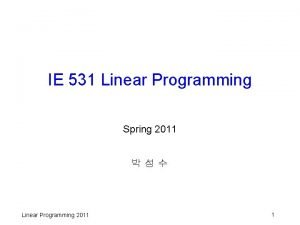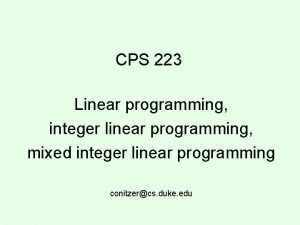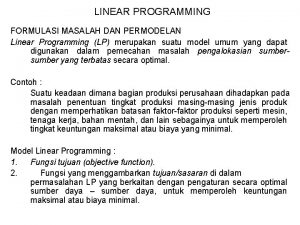Part 3 Linear Programming 3 3 Theoretical Analysis





































- Slides: 37

Part 3 Linear Programming 3. 3 Theoretical Analysis

Matrix Form of the Linear Programming Problem

Feasible Solution in Matrix Form

Tableau in Matrix Form (without the objective column)

Criteria for Determining A Minimum Feasible Solution



Theorem (Improvement of Basic Feasible Solution) • Given a non-degenerate basic feasible solution with corresponding objective function f 0, suppose for some j there holds cj-fj<0. Then there is a feasible solution with objective value f<f 0. • If the column aj can be substituted for some vector in the original basis to yield a new basic feasible solution, this new solution will have f<f 0. • If aj cannot be substituted to yield a basic feasible solution, then the solution set K is unbounded and the objective function can be made arbitrarily small (negative) toward minus infinity.

Optimality Condition for a Minimum! •

Symmetric Form of Duality (1)

Symmetric Form of Duality (2) •

Alternative Form of Duality

Example Batch Reactor B Batch Reactor A Batch Reactor C Raw materials R 1, R 2, R 3, R 4 Products P 1, P 2, P 3, P 4 P 1 P 2 P 3 P 4 capacity time A 1. 5 1. 0 2. 4 1. 0 2000 B 1. 0 5. 0 1. 0 3. 5 8000 C 1. 5 3. 0 3. 5 1. 0 5000 profit /batch $5. 24 $7. 30 $8. 34 $4. 18 time/batch

Example: Primal Problem

Example: Dual Problem

Property 1 For any feasible solution to the primal problem and any feasible solution to the dual problem, the value of the primal objective function being maximized is always equal to or less than the value of the dual objective function being minimized.

Proof

Property 2

Proof

Duality Theorem If either the primal or dual problem has a finite optimal solution, so does the other, and the corresponding values of objective functions are equal. If either problem has an unbounded objective, the other problem has no feasible solution.

Alternative Form of Duality

Additional Insights Shadow Prices!

Matrix Form of the Linear Programming Problem

Feasible Solution in Matrix Form

Tableau in Matrix Form (without the objective column!)

Relations associated with the Optimal Feasible Solution of the Primal (Minimization) Problem This is the optimality condition of the primal minimization problem! Property 2 is satisfied!

Example PRIMAL DUAL


Tableau in Matrix Form of Primal Problem


Example: The Primal Diet Problem •

Primal Formulation

Alternative Form of Duality

The Dual Diet Problem •

Dual Formulation

Shadow Prices How does the minimum cost in the primal problem change if we change the right hand side b (lower limits of nutrient j)? If the changes are small, then the corner which was optimal remains optimal, i. e. – The choice of basic variables does not change. – At the end of simplex method, the corresponding m columns of A make up the basis matrix B.

 Perbedaan linear programming dan integer programming
Perbedaan linear programming dan integer programming Integer programming vs linear programming
Integer programming vs linear programming Perbedaan linear programming dan integer programming
Perbedaan linear programming dan integer programming Sensitivity range linear programming
Sensitivity range linear programming Simplex method sensitivity analysis
Simplex method sensitivity analysis Greedy programming vs dynamic programming
Greedy programming vs dynamic programming What is in system programming
What is in system programming Theoretical analysis of time efficiency
Theoretical analysis of time efficiency Theoretical analysis of culture
Theoretical analysis of culture Define part program
Define part program Linux kernel hacking
Linux kernel hacking Simplex method
Simplex method Difference constraints and shortest paths
Difference constraints and shortest paths Canonical form of linear programming problem
Canonical form of linear programming problem Linear programming case study
Linear programming case study Non negativity constraints
Non negativity constraints Scope of linear programming
Scope of linear programming Network model linear programming
Network model linear programming Management science linear programming
Management science linear programming Pengertian linear programming
Pengertian linear programming Linear programming word problems
Linear programming word problems Characteristics of
Characteristics of An animal feed company must produce
An animal feed company must produce Pengertian linear programming
Pengertian linear programming Lp model formulation
Lp model formulation Linear vs integer programming
Linear vs integer programming Scope of linear programming
Scope of linear programming Goal programming example
Goal programming example Linear programming powerpoint
Linear programming powerpoint The zj row in a simplex table for maximization represents
The zj row in a simplex table for maximization represents Operations management linear programming
Operations management linear programming Cj - zj
Cj - zj Linear programming graphical calculator
Linear programming graphical calculator Operation research linear programming
Operation research linear programming 3-3 optimization with linear programming
3-3 optimization with linear programming Saba neyshabouri
Saba neyshabouri Linear programming relaxation
Linear programming relaxation Linear programming models graphical and computer methods
Linear programming models graphical and computer methods



